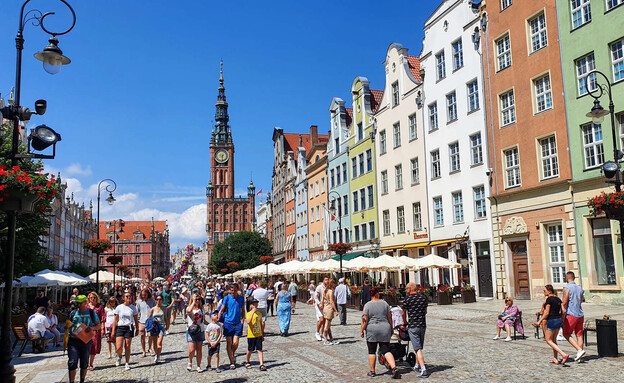Poland as a tourist destination still suffers from a lack of appreciation, and it is likely that many tourists associate it directly with the Second World War and the extermination camps, including Auschwitz which is near the city of Krakow. At the same time, most tourists do not know that the Baltic region of Pomerania (Pomerania), nestled in the North Sea, is where they will find the most beautiful Polish city. Gdansk not only boasts a high concentration of sites, but also reminds Amsterdam in regards to the architectural style of its buildings.
Gdansk is a historic port city that played a prominent role in European history. It was once a wealthy maritime power, even rivaling its Dutch counterpart, when at one point it was the most important shipbuilding center in Europe. In fact, it looks like a typical Dutch or West German city, and it’s not by chance: within the former Hanseatic League (an alliance of merchant groups who banded together to defend themselves from pirates)the cityscape of Gdansk was shaped in a traditional Mannerist style, with rows upon rows of houses with gables that also characterize Amsterdam.
A fairytale city that looks like a scenery
While Amsterdam’s buildings are mostly monochromatic and somber, Gdansk’s houses are an explosion of colors: on a trip to Długa (Dluga)the main and long pedestrian street that cuts through the old city, stand facades decorated in green, yellow, purple, crimson and blue.
The city is also home to the famous Rococo-style Neptune Fountain, St. Mary’s Church – a red-brick Gothic wonder – the picturesque Mariache Street famous for its simple cafés, jewel stalls and lavishly decorated front porches, and the beautiful Radonia Canal that could easily be in Amsterdam. The waterways were central to the development of Gdansk just like that of Amsterdam, and the banks of the Mutlawa River (Motlawa) It is among the most charming in Europe, and the center of a number of centuries-old buildings, such as a wooden crane from the 14th century that dates back to the city’s shipbuilding period.
In addition to the charm of the Middle Ages, history buffs should know that Gdansk is the birthplace of no less than Daniel Fahrenheit, who invented the famous scale for measuring degrees. That’s why if you’re traveling along the Dhaluga, you can’t miss Fahrenheit’s meteorological column.
This is where World War II began
Gdansk is one of the most historically charged cities in Europe, not only because of its glorious medieval period, but for a much darker reason: it was the first free city invaded by the Nazis. So, if you’ve ever wondered where exactly war was declared, it’s this picturesque Polish city.
The days of the war in Gdańsk and the period that followed are extensively documented in its museums, such as the museum depicting the period of World War II and the European Solidarity Center, which deals with the Polish struggle for independence from the Soviet Union. Tourists are also invited to visit Westerplatte (Westerplatte)the peninsula infamous for being the exact spot where the Nazis positioned themselves when they approached Gdansk from the Baltic Sea: although it’s a bit outside the city, getting there is easiest with bus lines 106 or 138 (the journey takes 30 minutes).
Gdansk is much cheaper than Amsterdam
Poland as a whole is among the cheapest destinations in Europe, and since tourists often give it up, the consumer prices in Gdansk stand in stark contrast to other city breaks, certainly if you consider Amsterdam or other northern European cities.
The average price for staying in a hotel in Gdansk is 55 dollars (about 200 shekels) per night, compared to Amsterdam where a night in a hotel will cost an average of 222 dollars (over 800 shekels). More broadly, a week-long vacation in Gdansk, including related expenses, will cost an average of $782 (about NIS 2,900), compared to a week-long vacation in Amsterdam that will cost an average of $1,392 (over NIS 5,200).
